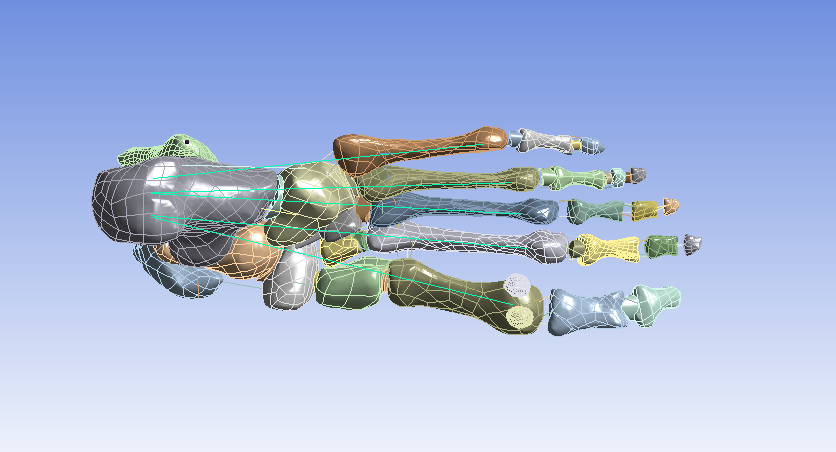
本研究模型中筋膜模型结合解剖学及影像学资料确定筋膜在足部的附着点和走向,在附着点处提取节点,连接两节点生成模拟足底筋膜的单元。本研究的筋膜使用 ANSYS WORKBENCH 20 R2(美国,Ansys 公司)软件建立。筋膜单元由LINK180单元建立,LINK180单元是一个单轴拉伸压缩的单元,每个节点有三个自由度:在节点 x、y 和 z 方向上的平移。该单元可以只受拉伸或只受压缩,不承受弯矩,具有塑性、蠕变、旋转、大变形、大应变等功能,筋膜的横截面积为58mm2。足底筋膜近端附着于跟骨结节,由此向远端分为五束,远端附着在各趾的趾腱鞘处。
The fascia model in this study determines the attachment point and direction of the fascia in the foot based on anatomical and imaging data, extracts nodes at the attachment point, and connects the two nodes to generate a unit simulating the plantar fascia. The fascia in this study was established using ANSYS WORKBENCH 20 R2 (Ansys, USA) software. The fascia element is established by LINK180 element, which is a uniaxial tension and compression element. Each node has three degrees of freedom: translation in the x, y and z directions of the node. The element can only be stretched or compressed without bending moment, and has the functions of plasticity, creep, rotation, large deformation, large strain, etc. The cross-sectional area of the fascia is 58 mm2. The proximal end of plantar fascia is attached to the calcaneal tubercle, which is divided into five bundles to the distal end, and the distal end is attached to the toe tendon sheath of each toe.